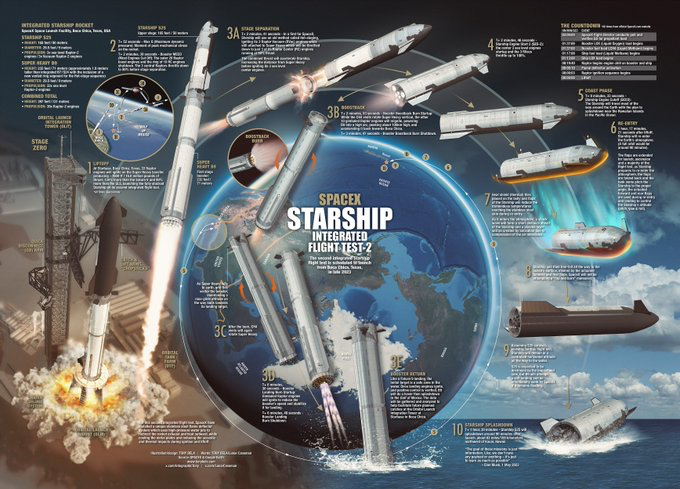- Joined
- 3 June 2011
- Messages
- 18,333
- Reaction score
- 12,218
Fingers crossed. Only a 20-minute window though so it will take a minor miracle for it to launch tomorrow.sea-water and sea-air are very corrosive...
...T-24 hour until launch.
Fingers crossed. Only a 20-minute window though so it will take a minor miracle for it to launch tomorrow.sea-water and sea-air are very corrosive...
...T-24 hour until launch.
That would be wrong.As far as I'm aware - they're the only company in the space game to take this tack.
For the record, I disagree. Success would include the possibility of an explosion.For the record. Success after launch means the rocket doesn't blow up. OK?
"Uh, Mr. Musk. Those hot exhaust gases tore up the launch pad."
Seriously?
They knew that in Germany during the war !!!
Confident, yes. Certain? Naw...I am sure that if SpaceX are going to launch tomorrow they will only launch if they are certain that things are going to be okay with the rocket, after all they do not want to have the second Starship to go wrong.
True, and there are a lot of Teslas in Norway. So perhaps it's not the motor nor the battery but some other component. I feel confident they'll isolate it.sea-water and sea-air are very corrosive...
...T-24 hour until launch.
NSF speculation is that it's due to air traffic in the PacificWhy the 20 minute window tomorrow morning? What's the limitation?
Sharks are more active on the weekends.Why the 20 minute window tomorrow morning? What's the limitation?
This might help:Y'know I've never been this excited about anything space-related before. (It might be out of topic but I just needed to express it somewhere.) But unfortunately I won't be able to watch it.
Is it a new attempt at the previously failed mission, i.e, reach the orbit and then splash down in the ocean near Hawaii?

Should of added, if you're interested in this stuff can strongly recommend Marcus Houses weekly YouTube videos for updates on all things space, as well as SpaceX:
Looks like FTS on second stage acted because of telemetry loss.Looks like both stages exploded: stage one several seconds after successfully staging, second stage several seconds before SECO. Vastly more successful than the first flight, but still suboptimal.
On wire harnesses, not mechanicalNow, is the FTS reliant on cables?
The SuperHeavy pitch might have yanked them with a bend...it could be that it could have made a controlled descent without it.
Maybe the hot staging did a burn through?
One more argument for parallel staging?
No, that is not a reason for FTS to activate.Looks like FTS on second stage acted because of telemetry loss.
Looks like FTS on second stage acted because of telemetry loss.
The re-light after staging immediately had issues, the number of lit engines kept falling off asymmetrically. Wonder if an engine went RUD energetically at re-light and that caused all kinds of issues.I had wondered what had happened to the booster Michel Van, things seemed to be going well up until that point.
The point is this is Tech on it limitsI had wondered what had happened to the booster Michel Van, things seemed to be going well up until that point.
that doesn't work for the nasa funded exploration missions - spacex needs to refill starship ~10x to get enough fuel onboard for human-scale interplanetary work, and at the timing/pace for that, you need to a full a return to senderThe point is this is Tech on it limits
This not falcon 9, but a 150 ton 33 engines Superheavy, who has to make 180° turn.
Remaining propellant splashing around in large Tanks.
Engines just shutdown and with still spinning Turbo pumps has to reignite again.
This time under high G-load during 180° turn.
Next to that they suck in mixture of gas and liquid, what damage the Turbo pump, until they RUD.
i look into this for fictional Moon colonisation
Here the booster make not return to launch site but stick on ballistic trajectory after engine shut down.
deploy parachute land in ocean and tug back to launch site for reuse
keep it simple and easy.
more here:
Thanks for clarification!The Flight Termination System works on Parameters
if rocket deviate from trajectory or certain parameters are fulfil.
Next to that can safety range officer give the FTS remote order to detonate.
As expected, the SpaceX Starship mishap triggers a SpaceX/ FAA investigation. No injuries or property damage reported.
STATEMENT
This information is preliminary and subject to change:
A mishap occurred during the SpaceX Starship
OFT-2 launch from Boca Chica, Texas, on Saturday, Nov. 18. The anomaly resulted in a loss of the vehicle. No injuries or public property damage have been reported.
BACKGROUND
A mishap investigation is designed to further enhance public safety, determine the root cause of the event, and identify corrective actions to avoid it from happening again.
The FAA will be involved in every step of the mishap investigation process and must approve the final mishap report, including the corrective actions.
A return to flight of the Starship Super Heavy vehicle is based on the FAA determining that any system, process, or procedure related to the mishap does not affect public safety.
This information is preliminary and subject to change:
A mishap occurred during the @SpaceX Starship OFT-2 launch from Boca Chica, Texas, on Saturday, Nov. 18. The anomaly resulted in a loss of the vehicle. No injuries or public property damage have been reported.
